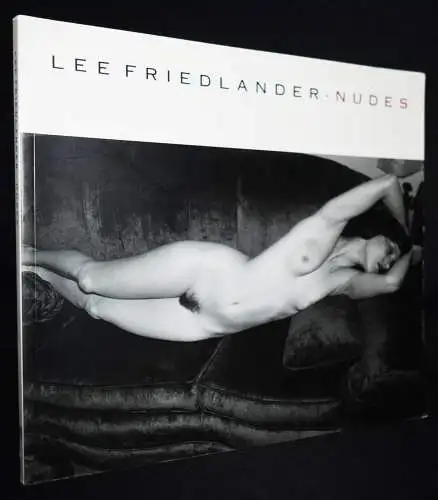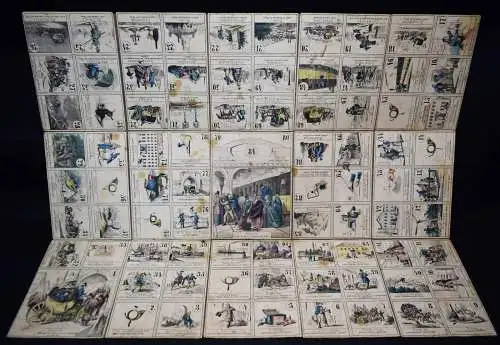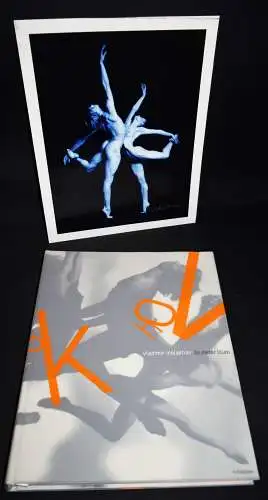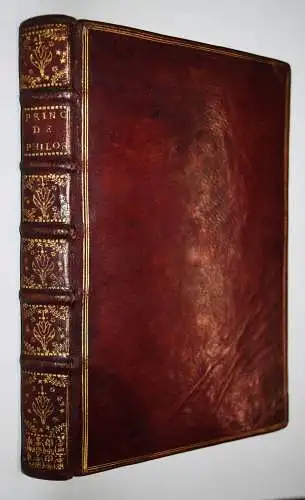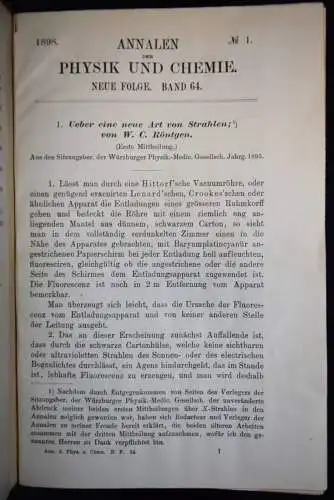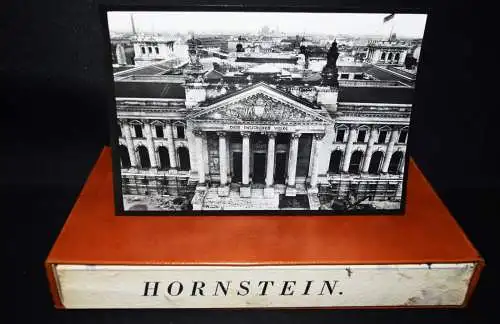Abdank-Abakanowicz, Br(uno).
Les intégraphes. La courbe intégrale et ses applications. Étude sur un
nouveau système d’intégrateurs mécaniques. Paris, Gauthier-Villars 1886.
Gr.-8°. X, 156 S. 94 Holzstichen im Text. OHln. mit goldgepr.
Rückentitel (vord. Orig.-Umschlag beigebunden).
Polski Slownik Biograficzny I, 1 f.
Thomash/Williams A 1. – Erste Ausgabe. – Mit eigenhändiger Widmung von
B. Abdank-Abakanowicz „Hommage de l’autheur B. abdank-abakanowicz 5
place du Panthéon Paris“. – Eine deutsche Übersetzung von Emil Bitterli
erschien 1889 in Leipzig. – „The integraph is a noteworthy development
in the history of calculating instruments. While the principle on which
it is based was introduced by Coriolis in 1836, it was in 1878 that
Abdank-Abakanowitz first developed a practical working model. The
integraph is an elaboration and extension of the planimeter, an earlier,
simpler instrument used to measure area. It is a mechanical instrument
capable of deriving the integral curve corresponding to a given curve.
Hence, it is capable of solving graphically a simple differential
equation. Sets of partial differential equations are commonly
encountered in mathematical physics. Most branches of physics such as
aerodynamics, electricity, acoustics, plasma physics, electron-physics
and nuclear energy involve complex flows, motions and rates of change
which maybe described mathematically by partial differential equations. A
well-established example from electromagnetics is the set of partial
differential equations known as Maxwell’s equations. In practice,
differential equations can be difficult to integrate, that is to solve.
The integraph is capable of solving only simple differential equations.
The need to handle sets of more complex non-linear differential
equations, led Vannevar Bush to develop the Differential Analyzer at MIT
in the early 1930s. In turn, limitations in speed, capacity and
accuracy of the Bush Differential Analyzer provided the impetus for the
development of the ENIAC during World War II. Abdank-Abakanowicz’s
instrument could produce solutions to a commonly encountered class of
simple differential equations of the form dy/dx = F(x) so that y = ò
F(x)dx. The basic approach was to draw a graph of the function F and
then use the pointer on the device to trace the contour of the function.
The value of the integral could then be read from the dials. The
concept of the instrument was taken up and soon put into production by
such well known instrument makers as the Swiss firm of Coradi in Zurich“
(E. Tomash). – Der polnische Mathematiker und Elektrotechniker B.
Abdank-Abakanowicz (1852-1900) war nach seinem Ingenieur-Studium am
Polytechnikum Riga Dozent für Mechanik in Lemberg. „Dort begann er seine
Studien zur Planimetrie, die zum Bau des sog. Integrators führten, das
zur zahlenmäßigen Darstellung von Infinitesimalrechnungen dient. Eine
Beschreibung dieses mathematischen Instruments veröffentlichte Bruno
Abakanowicz 1880 in „Rozprawy i Sprawozdania Wydzialu
matematyczno-przyrodniczego Akademii Umiejetnosci w Krakowie“ sowie in
der Warschauer Zeitschrift „Inzynierya i Budownictwo“. … Um 1880
erfanden er und der britische Physiker Sir Charles Vernon Boys
unabhängig voneinander den Integraphen. 1881 siedelte Bruno Abakanowicz
nach Paris um, wo er eine elektrotechnische Werkstatt errichtete. 1882
wurden schließlich noch drei Abhandlungen hierzu in den „Comptes rendus“
an der Pariser Akademie der Wissenschaften veröffentlicht. Kurze Zeit
später wurde er zum Direktor der Betriebe der Compagnie française du
procédé Thompson-Houston berufen. In diese Zeit fällt der Bau einer
elektromagnetischen Klingel für Eisenbahnsignalanlagen sowie ein neuer
Typ von elektrischen Lampen. Im Jahre 1889 übertrug ihm die französische
Regierung die Leitung der Verhandlungen mit den USA bezüglich ihrer
Teilnahme an der Weltausstellung Paris 1889. In demselben Jahr wurde ihm
das Kreuz der Ehrenlegion verliehen“ (Wikipedia). – Rücken u. Kanten
etwas berieben, mehrfach gestempelt (TH Wien, „Ausgeschieden“), das
erste Bl. etwas gelockert, sehr gutes Exemplar.
Gute Ware
alles bestens!
